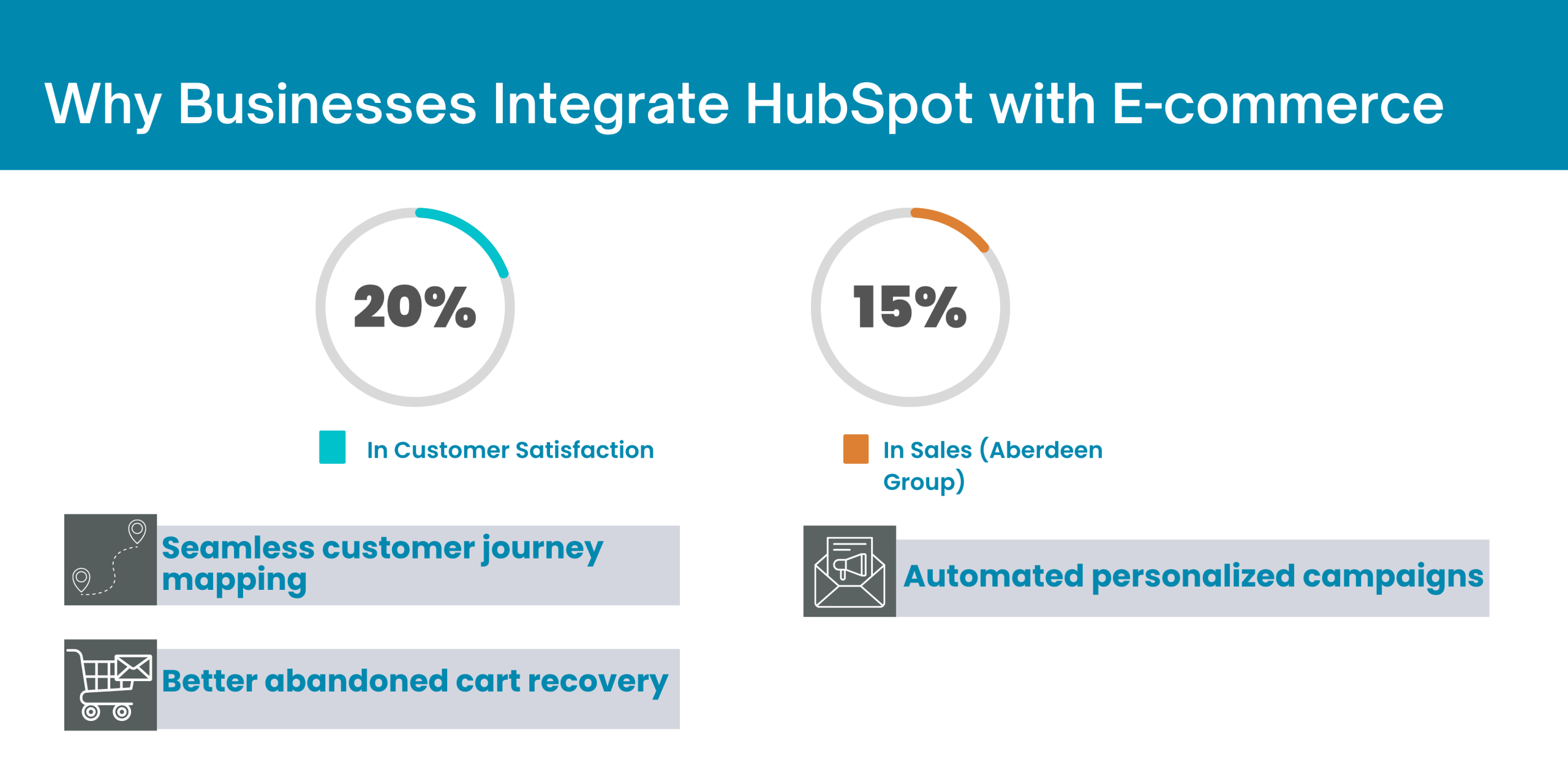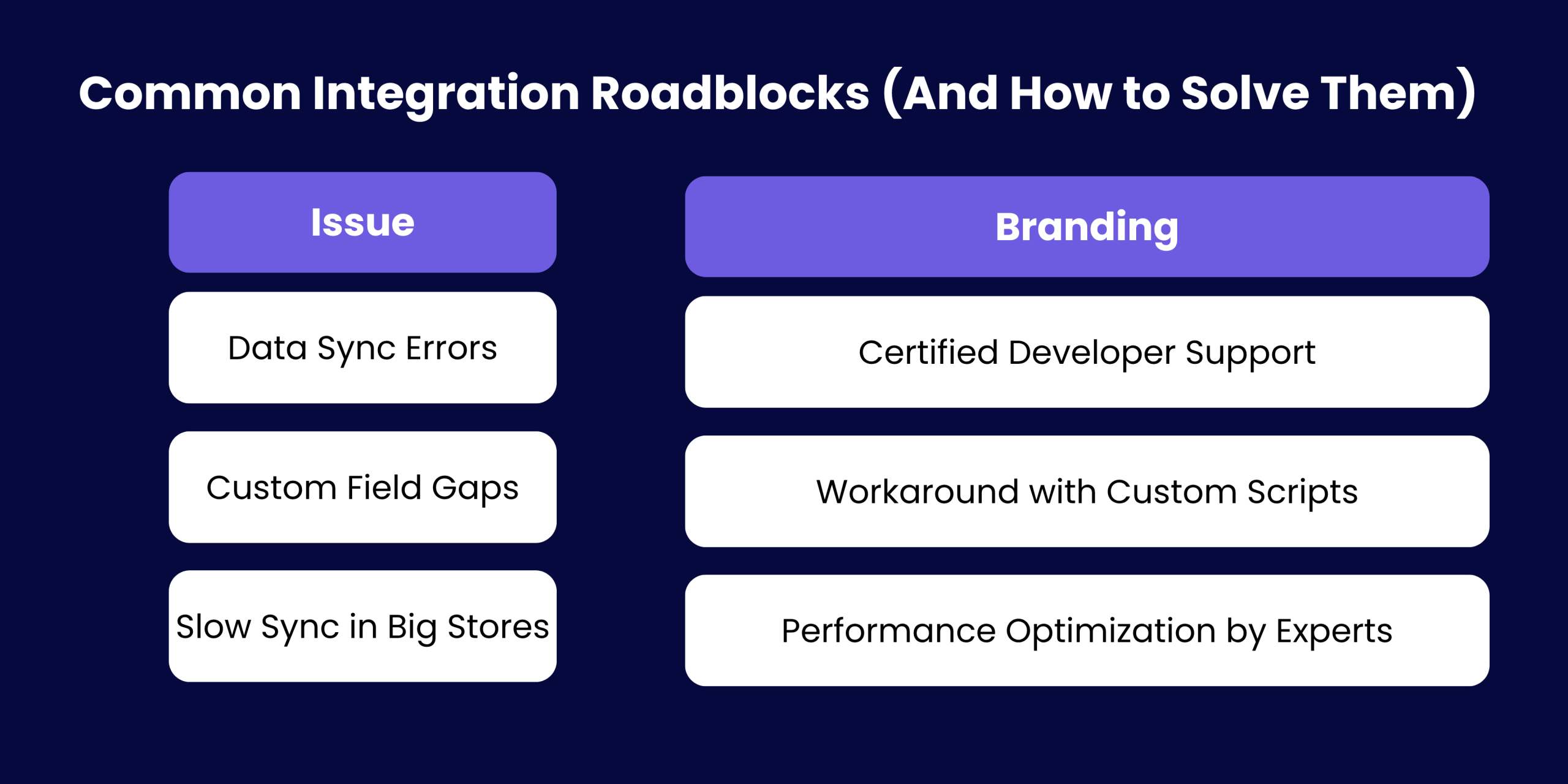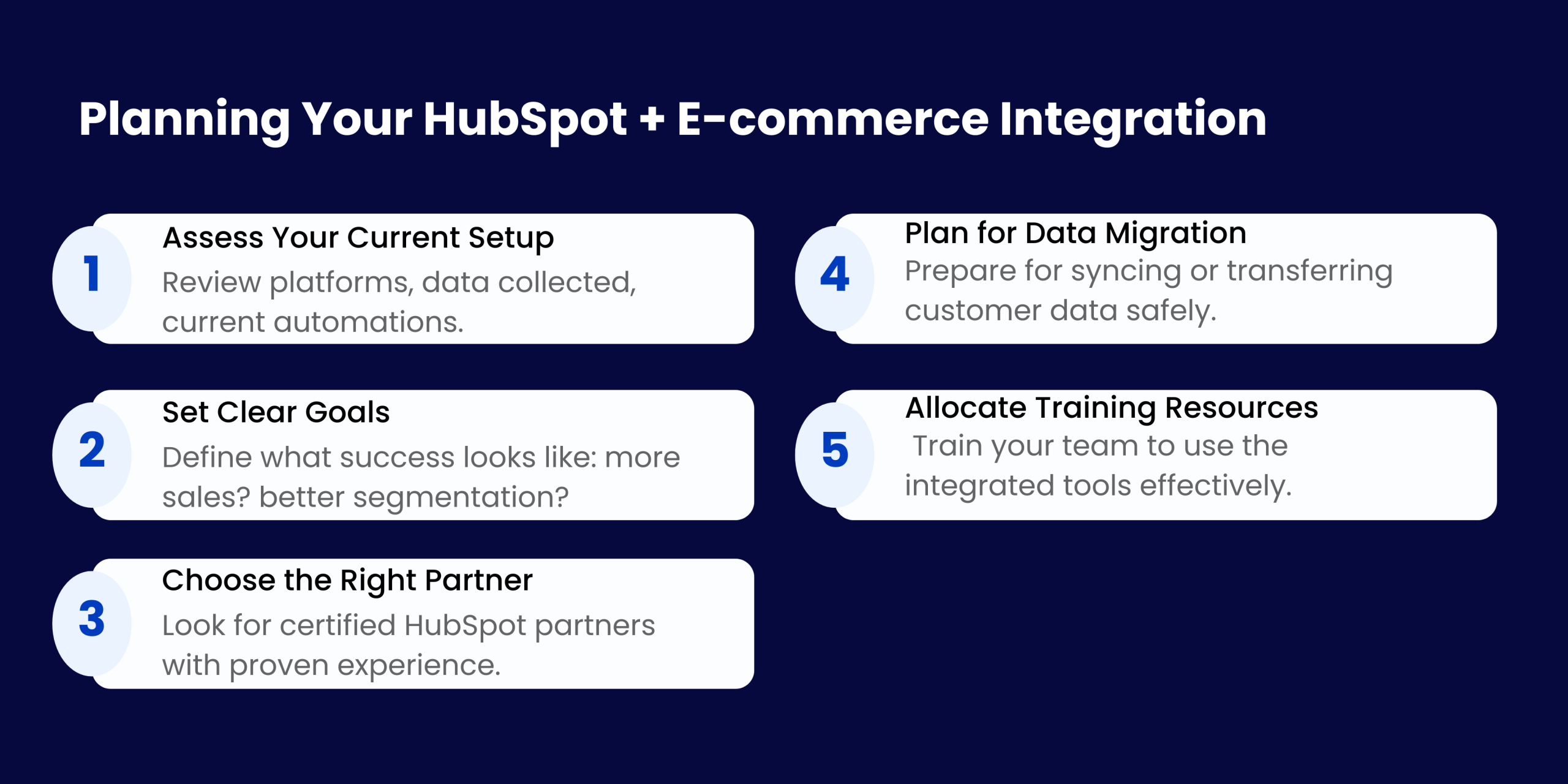
While each platform has its own specific integration process, here’s a general overview of what you can expect:
1. Prepare Your Data
Before you start connecting systems, it’s important to clean up your data. Make sure customer information is consistent across platforms, products are properly categorized, and any custom fields you want to sync are set up correctly.
2. Install the Integration App or Plugin
Most e-commerce platforms offer a HubSpot integration through their app marketplace. For example, Shopify has a HubSpot app that you can install directly from the Shopify App Store. This is where working with certified HubSpot partner services can save you time and headaches, as they can ensure everything is set up correctly from the start.
3. Configure Data Mapping
This critical step determines what information gets shared between platforms. You’ll need to decide which customer fields, order details, and product information should sync between your e-commerce platform and HubSpot.
4. Set Up Automation Workflows
The real power of connecting HubSpot with your e-commerce platform comes from the automation possibilities. You can create workflows that:
-
Send a welcome series to new customers
-
Follow up after a purchase with related product recommendations
-
Re-engage customers who haven’t purchased in a while
-
Recover abandoned carts automatically
According to HubSpot’s own research, automated workflows can increase qualified leads by up to 451%, showing just how powerful these automations can be when set up correctly.
5. Test the Integration
Before fully relying on your new integrated system, thoroughly test it to make sure data is flowing correctly in both directions. Place test orders, update customer information, and verify that everything appears correctly in both systems.
















